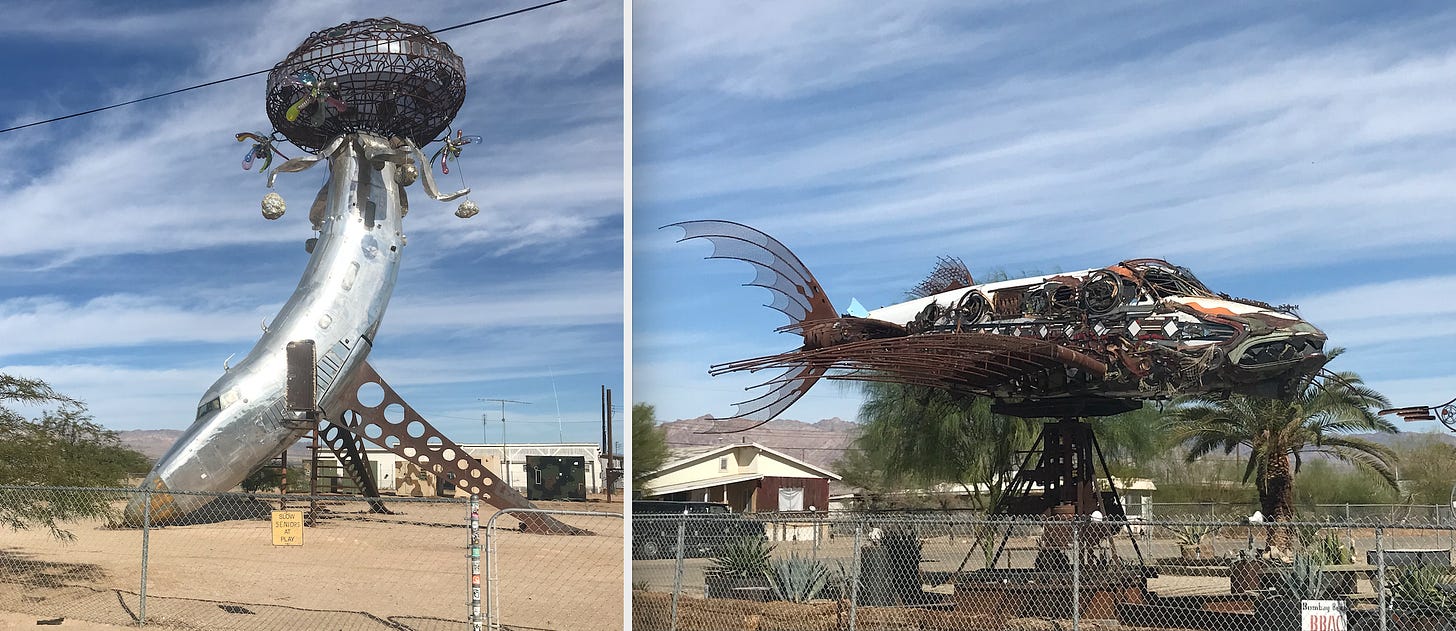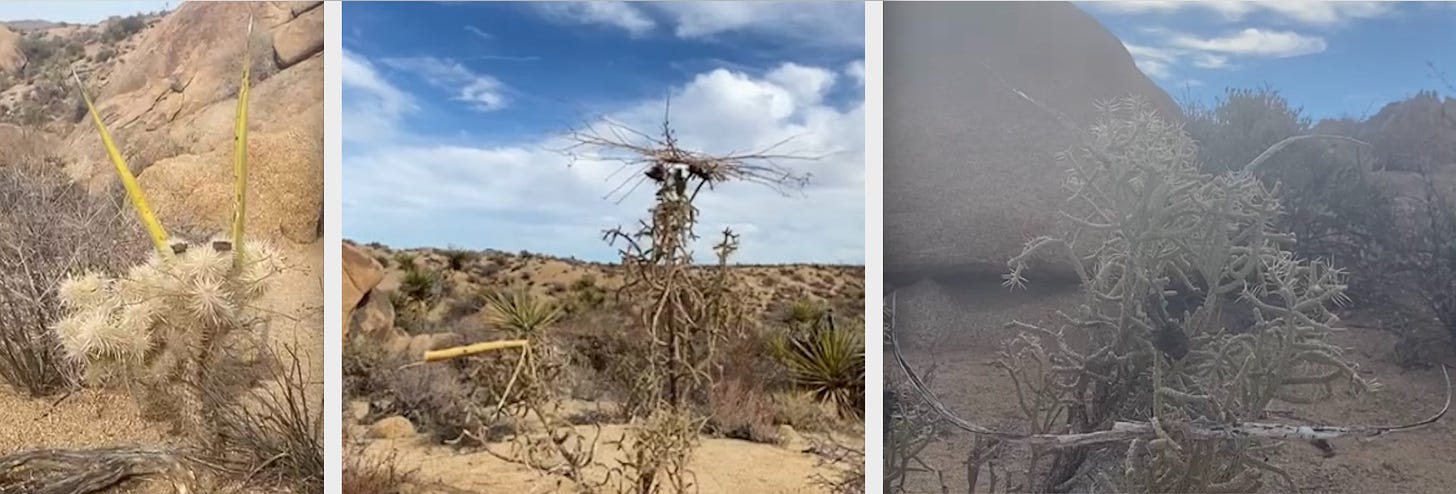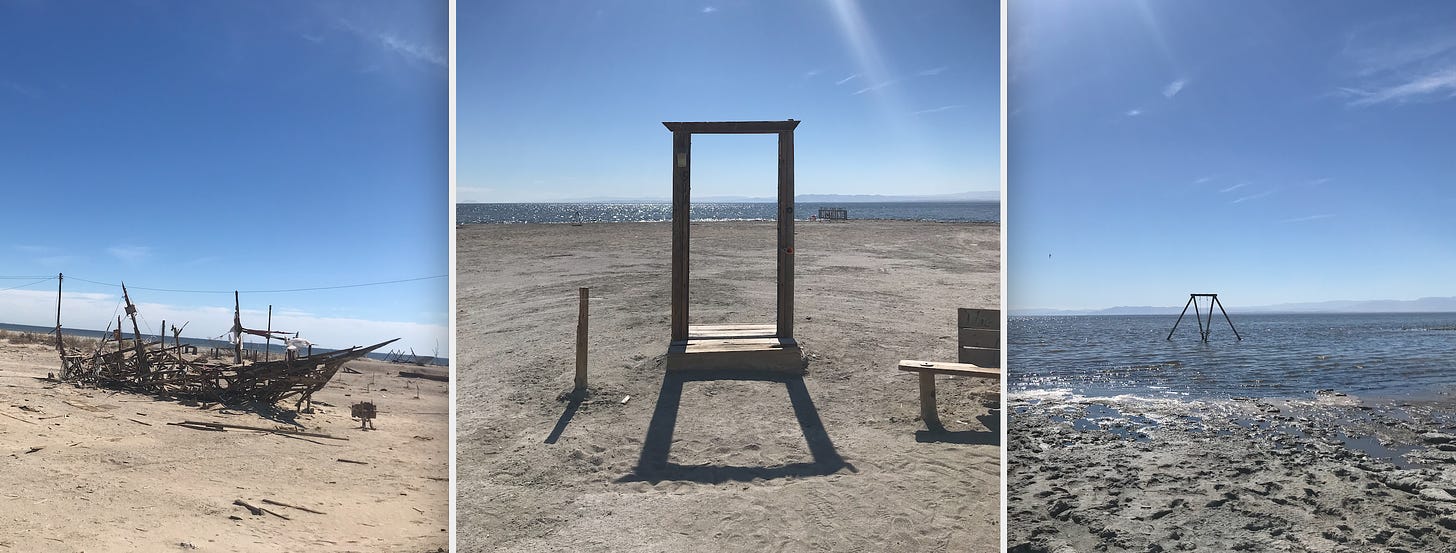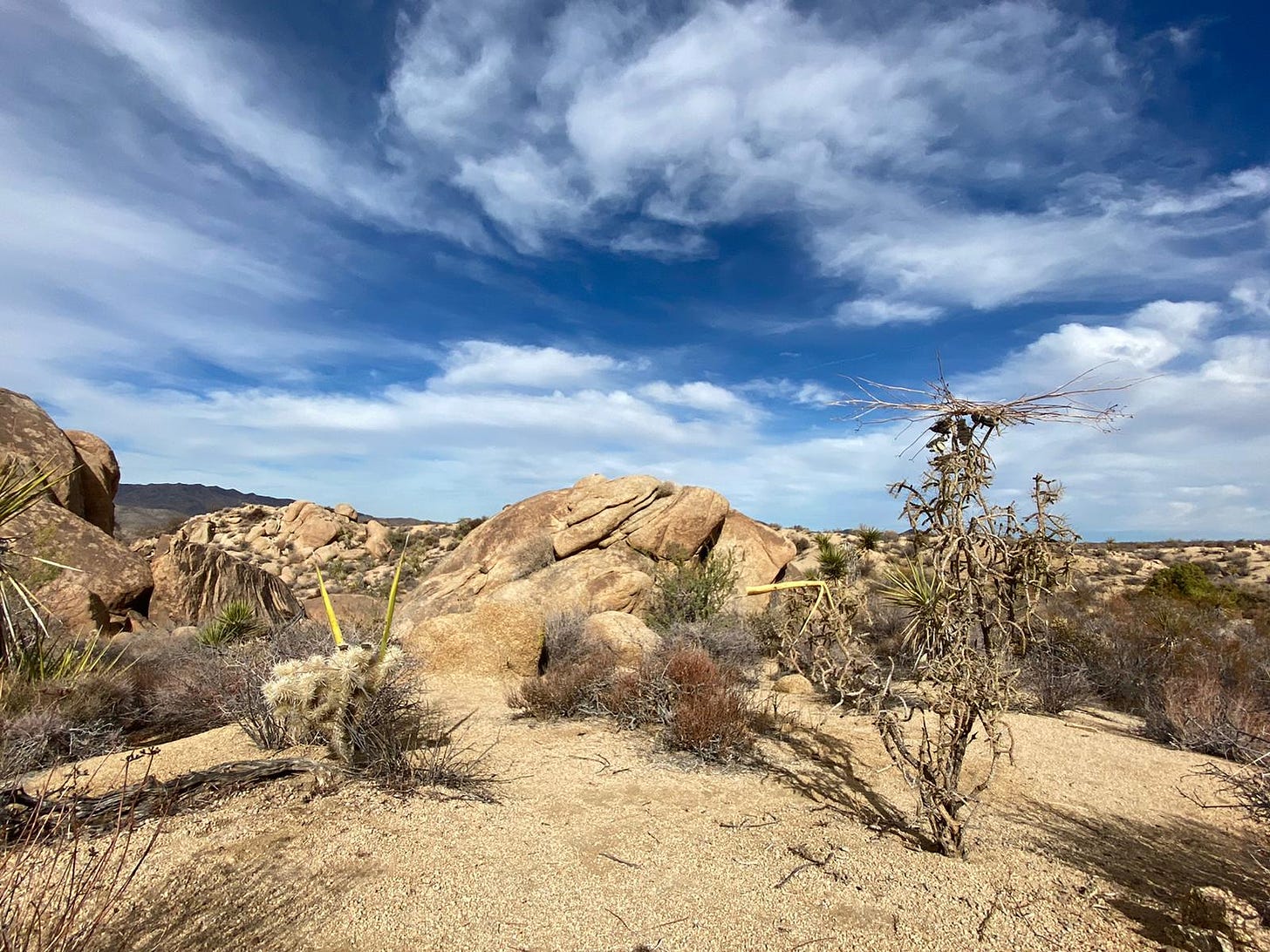White Houses, Banana Planes, Desert Snowmen
We have started our final stint of the trip, a section that is taking place almost exclusively in the desert. The desert is known for being a lot of things dry, hot, exhausting, and it is often portrayed and this place people go crazy or where things go and die. While all of these things have some resemblance of truth, the desert is also known as a place where people create. Out of the crazy and cycles of life and decay comes an immense amount of creativity. After seeing a variety of art from the Desert X installations, Noah Purifoy’s two-acre lot, and the town of Bombay Beach on the Salton Sea we were tasked with “making weird art.” There were no other guidelines, it could be a sculpture, drawing, or just an elaborate concept we came up with within our minds. We just needed to create, to tap into our desert crazy and see what happened.
Most of the desert art that we have seen has been built on what was left behind. In other places, like the Pacific Northwest, or the East coast, climates with far more water and moisture in the air, a building falls down and begins to decompose. Metals rust, wood rots and returns to the earth, plants grow quickly and cover-up what once was. And while elements of this remain true in the desert, the timeline is extended massively. Things left out in the desert stay visible in that landscape much longer than if the same items were left in any other climate.
People’s motivation in the desert to take what has been left behind and create a new narrative around it is inspirational. Some of these pieces told global narratives about politics and social issues. Such as the piece we saw at Noah Purifoy’s gallery that was made almost entirely out of used and discarded porcelain toilets and was labeled “The White House.” In one of the Desert-X pieces, “The Wishing Well,” artist Serge Attukwei Clottey expresses issues of water access through massive cubes constructed out of plastic bottles used in Ghana to transport the precious resource they rely on and are running out of. The art we saw on Bombay Beach paid homage to the sea and the town and culture that used to be there. This was done through the creation of a shipwreck, doorways to nowhere, and a swing set in the ocean among many other things. The people who now occupy the space of Bombay Beach took the narrative that was left behind by the 1950s resort getaway and reutilized its degree to retell the story of this place in a new, creative way. Obviously, not all of the art at Bombay or any of the other sites we visited had such broad or deep meanings. Some of it just seemed to be done for art’s sake and the desire to create, such as the airplane fish and banana that were created for Burning Man. The desert seems to have an effect on people that taps into a whole new realm of creativity, or maybe it’s just that their creativity stands out more against the desert landscape, or that the desert just attracts those who require creative methods of expression


On our day off in Joshua tree, backed with two days off looking at others creations and the prompt to “make weird art,” Lexa and I wandered off to an outcropping of boulders East of our campsite to see what we could create out of what the desert could give to us. The starting point of our creative journey came out of the Calvin and Hobbes recurring snowmen storylines where something innocent, like a snowman, is given a bizarre and typically not-so-happy story by the creators of the piece. Given that we are in the desert actual snowmen as the base of our creation was not possible. Instead, we settled on something that the desert could give us, a group of cactus.
Using the brush, rocks, and scat in the surrounding area we began making our characters and a story began to tell its self. The actual building process wasn’t all that thoughtful, it was a lot of taking what we could get and letting that define the direction of our pieces. In the end, we had a standoff/possible love triangle between an individual with a violent streak and a large, flat-brimmed hat; a seductive rabbit with the feet of a chicken and the face of a fox (or still of a rabbit I just thought it looked more like a fox); and a mystery, mustached man. We created the storyline and dialogue after the fact.

Using the prompt to “go make weird art” we were able to explore the landscape and take more intentional time looking through the pieces that made up that environment. It was art for art’s sake. We had fun, we explored the plant community growing around us, we found and identified scats that further informed us of the animals that used the space, we scampered around on the rocks, and listened to good music. Having open-ended intention with the landscape allowed us to explore, learn, and create all at the same time.
…
Unrelated, this afternoon, on our drive to Yuma, Arizona we drove past the town of Felicity, more commonly known as “The Center of the World.” If you have the time and are at all interested, I highly recommend learning about its founder Jacques-Andre Istel and how/why he created it. Very entertaining.
Here are a few places to get started:
https://theculturetrip.com/north-america/usa/california/articles/everything-you-need-to-know-about-felicity-the-center-of-the-world/
https://www.roadsideamerica.com/story/2036
https://www.nytimes.com/2014/02/23/magazine/a-journey-to-the-center-of-the-world.html





